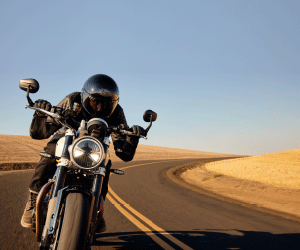Safety is a major concern for motorcycle manufacturers when designing new models, and over the years, several solutions have been developed to make riding on two wheels increasingly safer. However, there has been little done to prevent the rider from being ejected in the event of an accident. Or at least, that’s how it seems.
According to CycleWorld, CFMoto has filed a patent for a kind of seatbelt concept for motorcycles, illustrated through the 1250TR-G. Historically, there have been few attempts to conceptualize or implement such a solution. This is partly because, unlike cars, motorcycles lack a surrounding structure to protect occupants, making it generally safer for the rider to be ejected to a safer location in the event of a crash.
The Chinese manufacturer’s concept aims to hold the rider in specific circumstances, allowing the motorcycle to absorb the energy from frontal impacts against hard objects. The rider wouldn’t be ejected by bumps or hard braking but would have the freedom to quickly exit the bike if it falls or if there is a side impact in an accident.
CFMoto’s patent proposes some solutions for this concept. One involves a pair of rigid bars on each side of the rider, positioned between the fuel tank and the area immediately behind the seat. These bars can be set to «open» or «closed» positions, and a small lateral force will be enough to open them.
Another concept includes lateral bars that rotate behind the rider and join in front. A secondary joint allows these bars to open, enabling the rider to enter or exit the motorcycle. The third proposal is a more conventional seatbelt, made from a fabric-like material. The rear part is mounted on a post inserted in a slot between the rider and passenger seats. A spring mechanism keeps the belt in place during frontal collisions but allows for quick release in the event of a side impact.
These innovative concepts aim to enhance rider safety by preventing ejection in certain scenarios while ensuring ease of exit in others, thus addressing one of the longstanding challenges in motorcycle safety.











